Volleyball strategies for blocking vary from team to team. For some, the
block is the primary method of defense. For others, blockers may be
used effectively to take up space diggers aren’t defending.
Who do you want to play the ball, your blockers or your diggers?
Read blocking
-
Advantages
If a team’s blockers are able to read hitters well, it can make defense a lot easier. It may become a lot easier to dig if your blockers are blocking well. Hitters may become confused and not know where to hit if they are being read.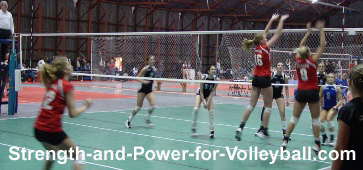
Blocking the ball by reading can cause hitters to make poor decisions and give diggers easier balls to dig and easier shots to chase down. -
Disadvantages
If the blockers get a bad read on the ball, often times the ball will ricochet off the hands in a way that makes it unplayable for the defense. Also, even if they do get a good read, if blocking technique isn't good, they may not get many blocks.
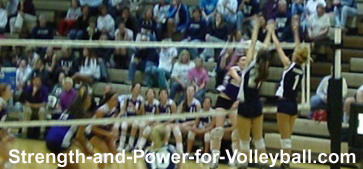 Area blocking
Area blocking
-
Advantages
If your team has big blockers, making your opponents hit where you want them to may be good volleyball strategies for blocking. This is good because the opposing attacks are more predictable. -
Disadvantages
By taking away area with your block, you may force hitters to hit at your defenders, but if you don’t play defense well this may not be the best strategy for defense.
When in blocking ready position, which is better, arms up or down?
It’s generally a good idea to have your arms up ready to reach above the
net to block a quick set. Also, in order to develop a consistent
blocking movement at the net, it’s best to keep your arms up.
So, as you use the volleyball strategies 3 step cross over or the 2 step lateral,
you can develop a more consistent flow and rhythm when moving to block.
It should almost be like you’re approaching to block, in the sense that
there is consistent flow to each time you move to block.
On the other hand, you can develop a technique to use to jump higher by using your arms when blocking, called a swing block.
Swing blocking is an effective way to use your arms to
jump higher when blocking. To swing block to the left, move both your
hands down to the left side of your body as you move to the left. As you
plant to jump, squat down facing left.
Then jump up and swing your body to the right to face the net penetrating your hands and arms over the net.
Volleyball Strategies to Surprise Opposing Attackers
Soft block
If you are up against a big hitter that time and time again hits the ball over you, you might try soft blocking. A soft block is blocking the ball in a way where you are just trying to keep the ball in play.
This is usually done by reaching high and back when blocking to deflect
the ball up so your teammates can make a play. These volleyball
strategies are often used by teams with short blockers.
Back row players can also do this as long as when they make contact with
the ball there isn’t any part of their body above the net.
So if a back row setter is chasing after a tight pass, they can turn and
legal block the ball below the top of the net. This is used most often
when the setter is just trying to keep the ball in play by not letting a
hitter bury the ball straight down.
But remember, since this isn’t a block, it’s your teams first contact.
So you only have two contacts left to get the ball up and over.
Split block
Performing split blocks with teammates can be effective volleyball strategies for surprising hitters.
Performing split blocks with teammates can be effective volleyball strategies for surprising hitters.
This is where you talk to your other blockers ahead of time and decide
the middle blocker is taking the angle hit and the outside or right side
blocker is taking line. There is a hole between the two blockers for
the diggers to defend.
This is best for when you have a hitter that repeatedly hits the ball sharply around a teams block.
Solo blocking
Blockers need volleyball strategies for when they get stuck blocking alone.
Blockers need volleyball strategies for when they get stuck blocking alone.
A solo blocker is often successful by either…
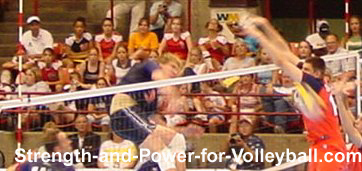

- Starting the block by standing in the hitters line or angle, then jumping and penetrating as you normally would or
- Starting in blocking position as if your blocking teammate was there with you, then as you jump reach to the side and penetrate into the angle or line to block.
Three volleyball strategies for solo blocking are…
-
Solo blocking angle
There are two methods to blocking solo angle. You can take an extra step over before you jump to take up more of the hitter’s angle when you block.Wait until the last second to take that extra step so it’s more difficult for the hitter to see you move there. Instead of moving your body over into the angle, you can simply reach over into the angle with both hands as you jump to block.This is effective because you take up more angle than the hitter is expecting. -
Solo blocking line
When solo blocking line you may not need to take a step over because there isn’t as much of an area to cover as there would be blocking angle.In fact, you may try standing more in the angle to help give the illusion that the line is open to attack. -
Spread blocking
A spread block is performed by spreading your arms and hands wide as you penetrate the net. This technique is effective against a hitter that sees a blockers body well, but not the hands and arms.Spread blocking is used best against hitters that hit around you time and time again no matter where you block. Throwing a spread block in the mix once in awhile is a good strategy when a hitter is seemingly unstoppable.
One hand clamp
A one hand clamp block is best for when the set is tight but not tight enough to get two hands on the ball. You basically want to get to the ball the same time or a split second after the hitter does.
Reach and get your whole hand around the ball as the hitter is hitting it. If you’ve been having trouble blocking a particular hitter
or are really good with the joust, this can be an effective strategy.
Volleyball strategies for blocking with one hand should only be used if
the sets not tight enough to get both your hands on the ball.
Of course, it’s always a better strategy to block with two hands.
Blocking with one hand is an advanced technique and may be best only
used to surprise or intimidate an attacker.
If all else fails…just jump up and penetrate
As you jump up to block, reach your hands over the net angling your palms down. Angle your arms and hands so that when the ball hits them the ball ricochets into your opponent’s court.
As you jump up to block, reach your hands over the net angling your palms down. Angle your arms and hands so that when the ball hits them the ball ricochets into your opponent’s court.
Don’t worry about bigger hitters that hit over you. If they practice
hitting straight down in warm ups, they’ll want to do it in the game.
These are the attacks that blockers with good form will block.
Blocking strategy varies from team to team. Therefore, volleyball players should be exposed to
various blocking techniques.
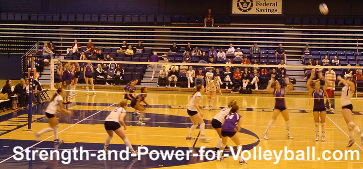 Basics of the 4 step approach...
Basics of the 4 step approach...
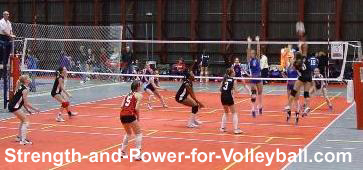
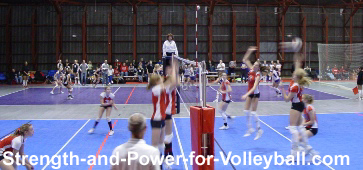
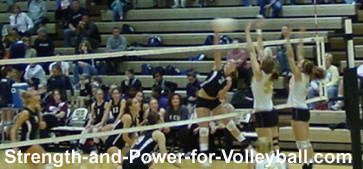 Learn to swing hard
Learn to swing hard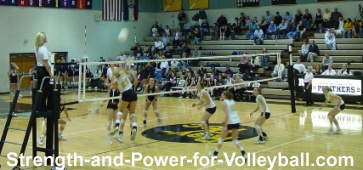 Always be ready to hit
Always be ready to hit The following are things to consider when learning how to set.
The following are things to consider when learning how to set.
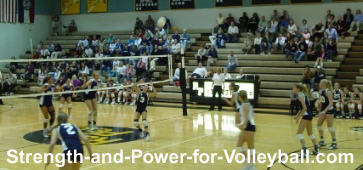 Developing a motor learning pattern
Developing a motor learning pattern Tips to successful setting…
Tips to successful setting…
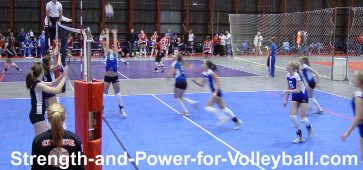
 Referees will less likely consider calling your hands
Referees will less likely consider calling your hands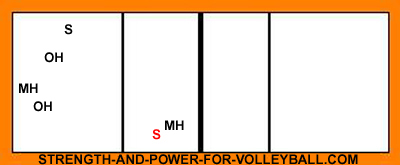
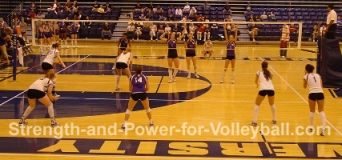
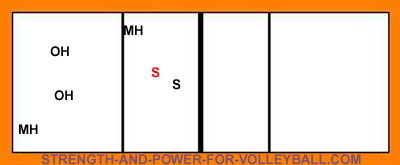
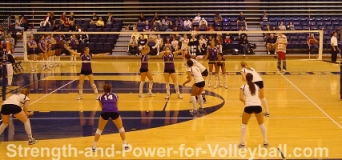
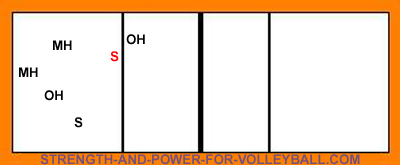
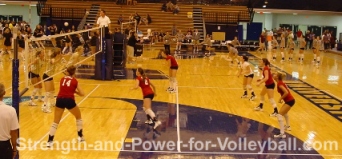
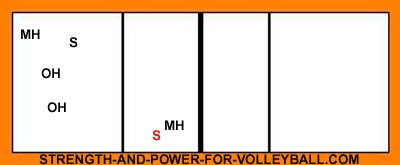
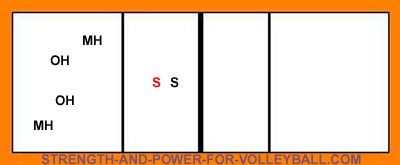
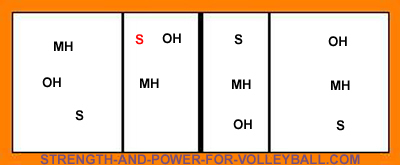
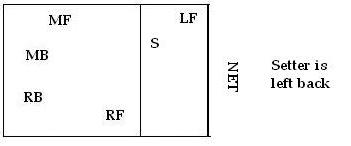
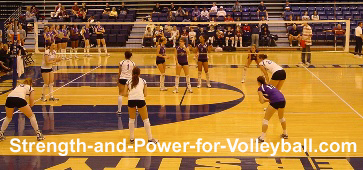
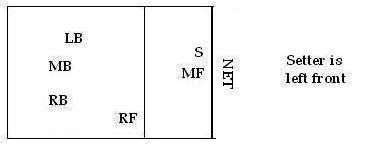
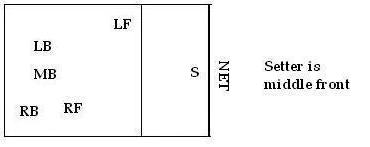
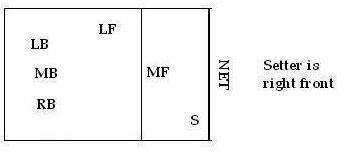
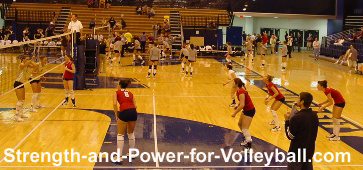
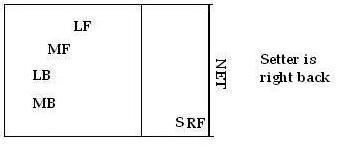
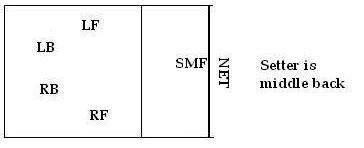
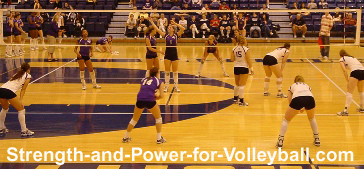
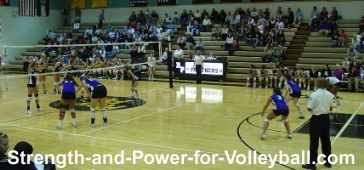
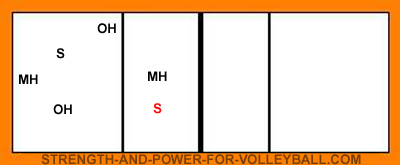
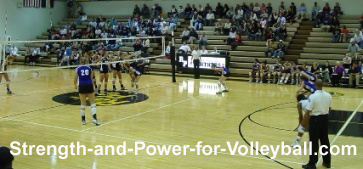
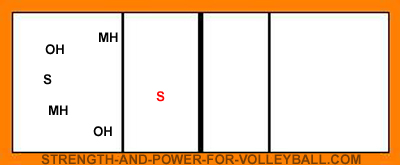
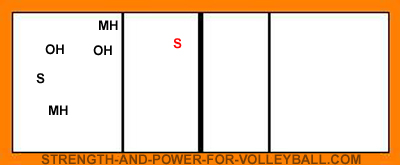
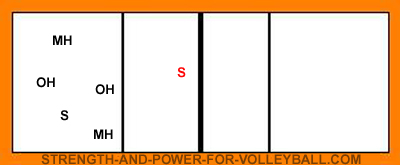
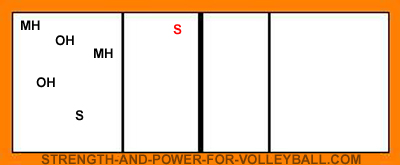
 "Defense should be designed so that it allows for putting the best diggers in areas that will most often be attacked."
"Defense should be designed so that it allows for putting the best diggers in areas that will most often be attacked."
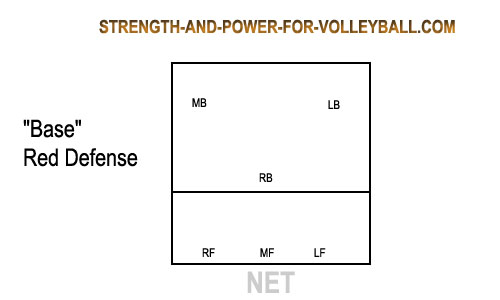
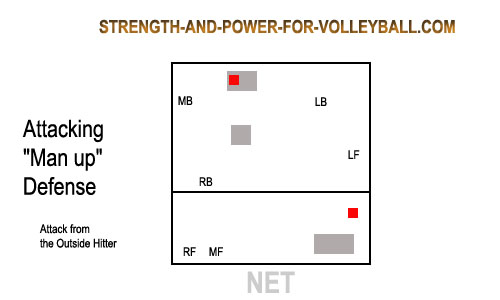
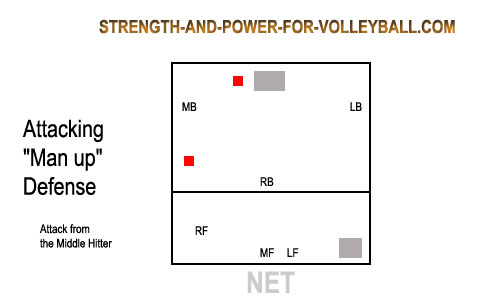
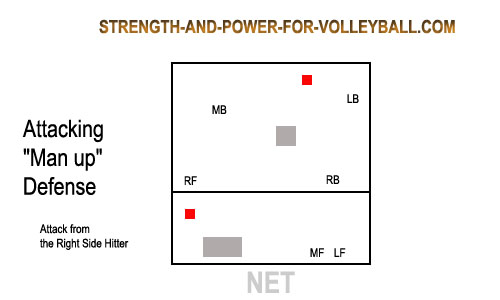
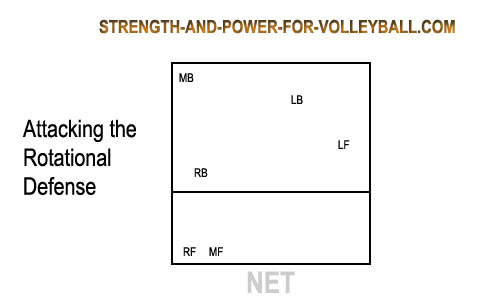
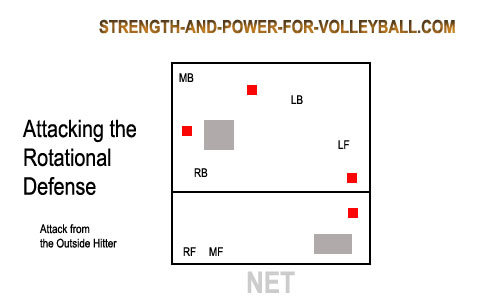
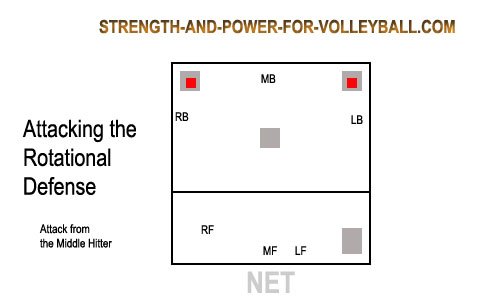
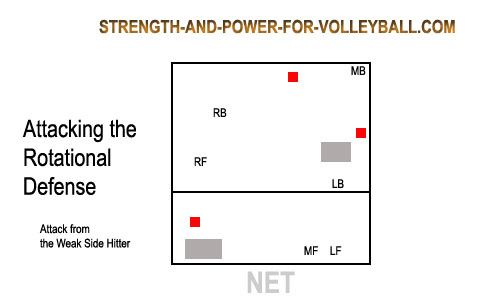
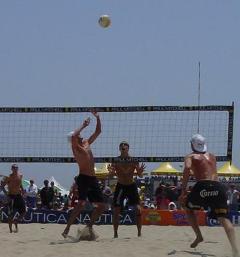

 If your opponent is predictable, you can use the following two strategies to
give yourself an edge...
If your opponent is predictable, you can use the following two strategies to
give yourself an edge...
 Even if you are about to start the game and don't know your opponents
strengths and weaknesses, it's better to just make
a plan for how to play them rather than playing without one. Even if you
don't have a strategy prepared, you can still experiment
during the game to see what works.
Even if you are about to start the game and don't know your opponents
strengths and weaknesses, it's better to just make
a plan for how to play them rather than playing without one. Even if you
don't have a strategy prepared, you can still experiment
during the game to see what works.
 Another example of your opponent doing what you want...
Another example of your opponent doing what you want... The best players have favorite strategies for playing. For example, when
hitting, most players have 2 or 3 favorite hits. Study great players and learn
to read these hits.
The best players have favorite strategies for playing. For example, when
hitting, most players have 2 or 3 favorite hits. Study great players and learn
to read these hits.
 Making your opponents change their game to do what you want has everything
to do with making adjustments.
Making your opponents change their game to do what you want has everything
to do with making adjustments.
 For example, if you shank every serve, one after the other, any kind of
adjustment you make is better than what you are currently doing.
For example, if you shank every serve, one after the other, any kind of
adjustment you make is better than what you are currently doing.
 The difference between winning and losing isn't usually talent, skill, or
experience.
Quite often any given team can win on any given day.
The difference between winning and losing isn't usually talent, skill, or
experience.
Quite often any given team can win on any given day.